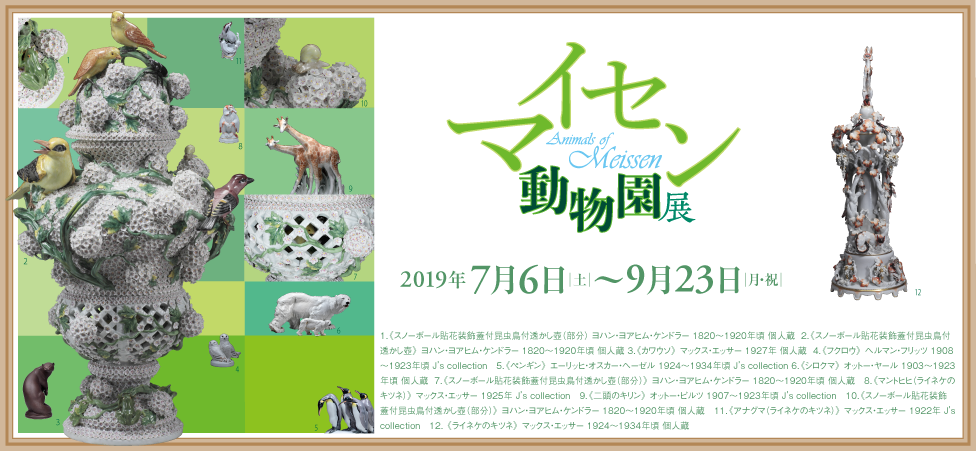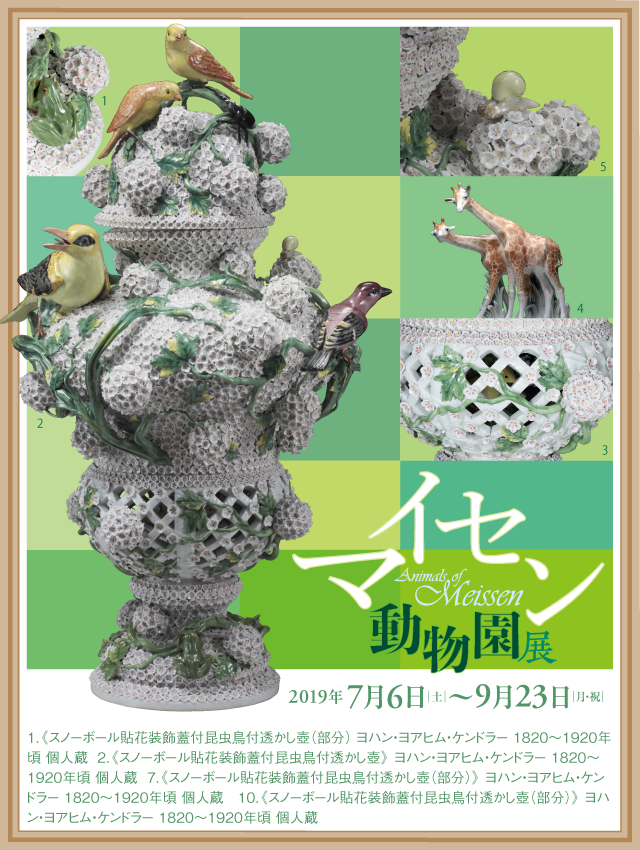Animals of Meissen


General Information
- Dates
- Jul. 6 – Sept. 23, 2019
- Hours
- 10 a.m. – 6 p.m. (Admittance until 5:30 p.m.)
* Open until 8 p.m. (admittance until 7:30 p.m.) on Aug. 2 and Sept. 6.
- Closed
- Wednesday, as well as Aug. 13 and 15
- Admission
- Adults: ¥1,000
Visitors aged 65 or over carrying proof of age: ¥900
Students (College): ¥700
Students (High / Middle school): ¥500
Admission is free for children in primary school and younger.
Groups of 20 or more will receive a ¥100 discount per person (not including those aged 65 or over).
Admission is free for disability passbook holders and up to one accompanying adult.
- Organizers
- Panasonic Shiodome Museum, The Tokyo Shimbun
- Support
- German Embassy in Tokyo, Minato Ward Board of Education
Exhibition Overview
Germany’s Meissen porcelain manufactory was established by royal decree in 1710 and became the first European factory to successfully produce hard-paste porcelain. This exhibition focuses on Meissen’s well-known animal figurines. Meissen’s artists were influenced by the Art Nouveau movement—which was taking place in Europe at the turn of the 19th century—and incorporated the movement’s aesthetics into everything from teacups to figurines. During this time, the artists mastered both the techniques of inglazing —in which paint is applied before glazing—and overglazing—in which decoration is applied to an existing layer of glaze before re-firing—allowing them to produce a rich palette of subtle shades.
Production of animal-themed artwork spans the history of art throughout the world. Some works, historically, are sculpted or drawn as symbols, while others are simply representative, conveying the intrinsically charming nature of animals. Meissen’s work is no less diverse. The patterns and details of Meissen’s animal pieces, especially during the Art Nouveau movement, masterfully depict the liveliness of animals with realism and grace. In this exhibition, the Art Nouveau pieces take center stage. Meissen’s sculpture and decoration are presented as never before, among a display of porcelain and stoneware accompanied by catalogues and other written documents.





